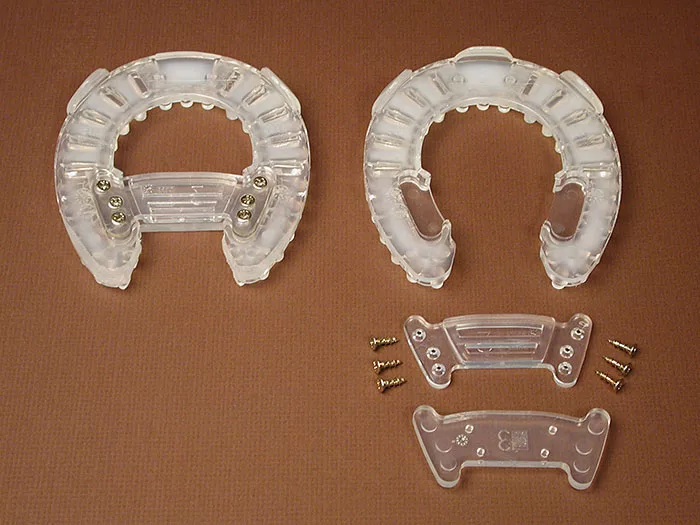American Farriers Journal
American Farriers Journal is the “hands-on” magazine for professional farriers, equine veterinarians and horse care product and service buyers.

FIGURE 1. (Above) Toe clips are easily removed with nippers. A screw-on bridge is used to adjust shoe width and comes in two halves. The heels can be nipped and rasped to form the approximate heel check after the shoe is nailed on.
Non-traditional horseshoes are becoming increasingly popular among both farriers and horse owners. However, these shoes often require application methods that are considerably different from traditional steel shoes.
Since these synthetic shoes are flexible, they are ideal for use with horses that are interfering or forging. If a horse steps on the heel of the shoe, the branch can bend, making it less likely to pry the shoe off of the other foot. These polysteel shoes are also wide webbed, which makes them helpful for feet that are prone to sore soles. A number of clients have also reported that horses move well in these shoes, possibly because the shoes are lightweight.
On the other hand, any hooves that require a support shoe, such as for sheared heels or cracks, are not good candidates for these synthetic shoes since the plastic materials are not rigid enough to stabilize the foot.
The polysteel shoes are available from two firms. Besides EquiFlex, Equine Digit Support System sells a Natural Balance Shoe in a polysteel material that is much lighter than steel shoes.
The primary differences between steel shoes and polysteel horseshoes are the techniques involved in preparing (boxing, etc.) and shaping the shoe. While steel shoes are prepared…